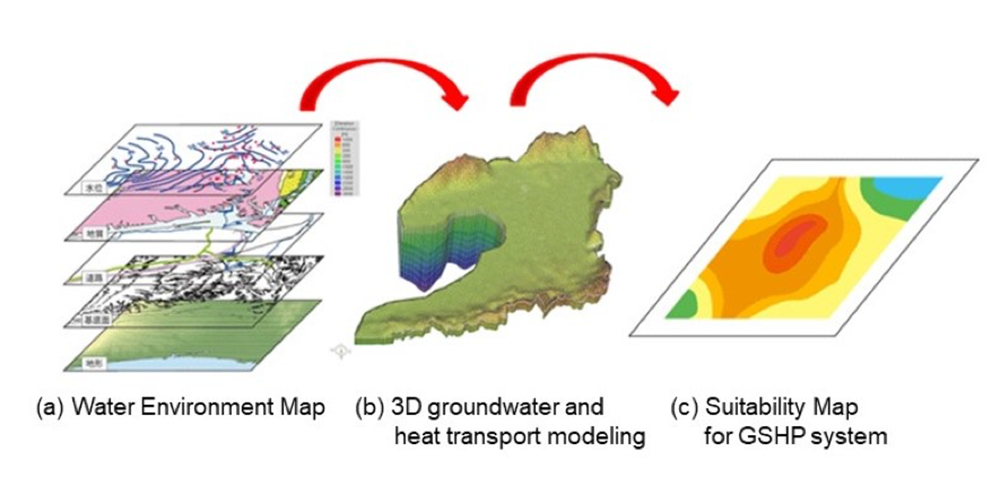Visualizing the installation potential for ground source heat pump systems in the Osaka Plain
-For the urban development utilizing groundwater resource-
Summary of AIST Press Release June 14, 2019
>>Japanese
The ground-source heat pump (GSHP) system is the technology that utilizes the temperature difference between ground surface and underground and enables space heating and cooling using low-enthalpy energy. However, the system is not popular in Japan because little scientific information is publicly available. For example, the Osaka Prefecture attempted to promote the installation of GSHP system among individual residences and commercial buildings but there were few objective indicators for the installation.
The Geological Survey of Japan, AIST has a long history of hydrogeological research and its application. The Groundwater Research Group has published the Water Environment Map Series targeting at urban plains and basins since 1957 and started to release them on the web since 2019 (https://www.gsj.jp/en/research/topics/pr20190531.html). The Shallow Geothermal and Hydrogeology Team of the Renewable Energy Research Center, AIST has been engaged in the assessment of the suitability for GSHP system mainly in northeastern Japan, where the demand for space heating is high, based on the analysis of the related hydrogeological data in the Water Environment Maps.
This time, the Osaka Prefecture and AIST collaboratively assessed the suitability of two different GSHP systems, closed loop and open loop systems, with the data in the Water Environment Map of the Osaka Plain, the latest one of the series. The study applied the evaluation technique of the potential of GSHP systems to the area of high-demand for space cooling for the first time. The resultant Suitability (or potential) Maps for the two types of GSHP systems clearly display the areas suitable for each system. The detailed data is available on our website (https://www.gsj.jp/data/interim-report/GSJ_DOC_INR_078_2019.pdf, only in Japanese). The result is expected to encourage the installation of the system both technically and financially and accelerate the best system planning in the area where space cooling is more demanded than space heating as a yearly average.
Fig.1 Process of making a Suitability Map for GSHP system
(a) Water Environment Map that compiles different hydrogeological information (geology, hydraulic head and underground temperature), (b) 3D groundwater flow and heat transfer model developed from (a), (c) Suitability Map of GSHP calculated from (b).


